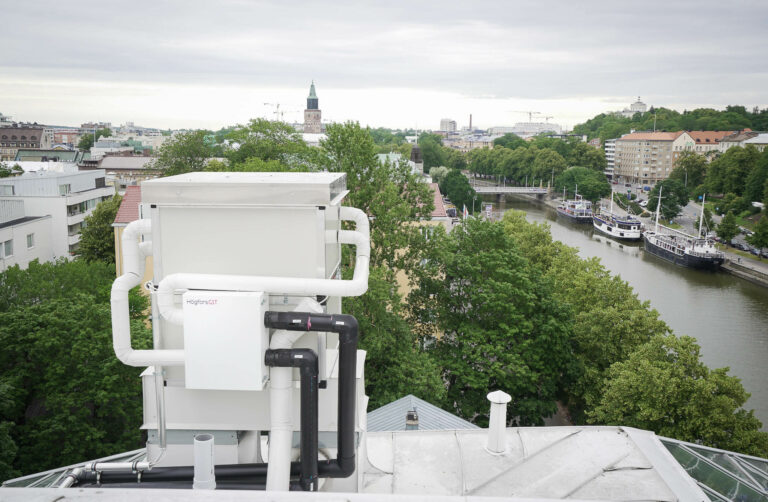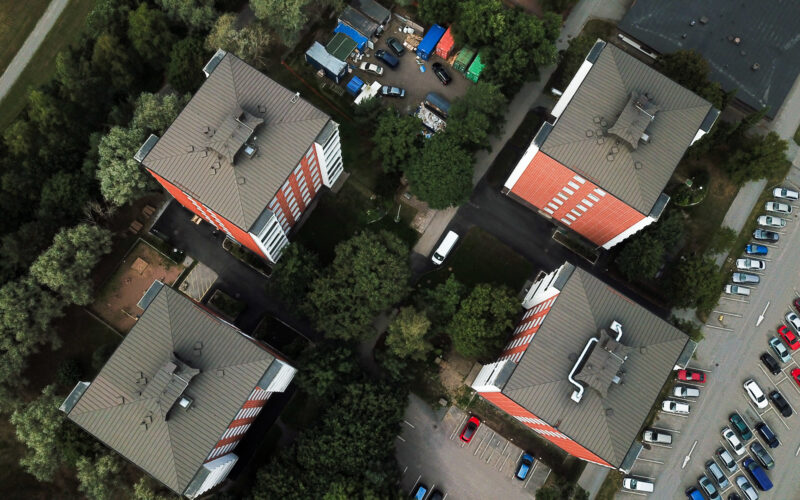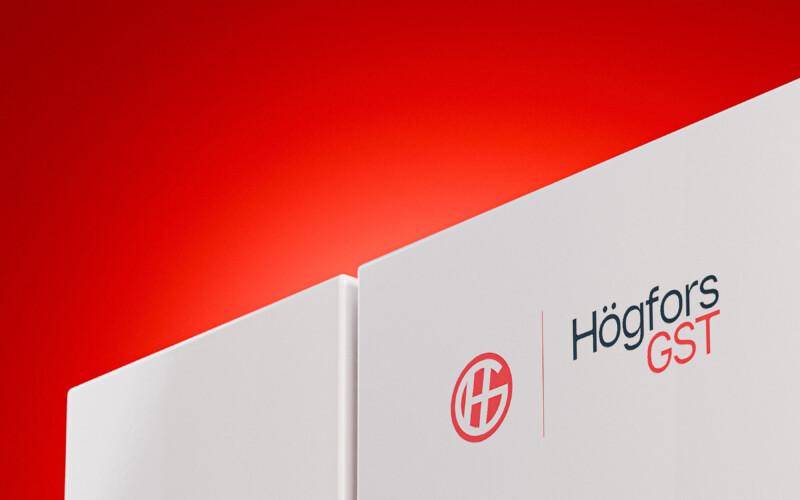Geothermal heating or district heating – the future of the heating system is a hot topic for many property owners. What if we could have the best of both worlds? Hybrid heating makes it possible.
Combining the best qualities of district heating and geothermal heating is now possible: a smart hybrid heating system combines different heat sources seamlessly under one roof – saving money and energy at the same time.
Hybrid heating is a sustainable choice
Many property owners are currently considering the future of their heating system, and the choice is often made between geothermal and district heating. Unfortunately, the comparison is often done with a rather narrow vision: the options are either to stay with district heating or to ditch it entirely and switch to geothermal heating.
Choosing a heating system is not a matter of black and white. Instead, hybrid heating allows properties to choose from a multitude of heat sources. Antti Hartman, Managing Director of HögforsGST, summarises the basic idea of hybrid heating:
– Hybrid heating combines multiple heat sources into one seamless system, making heating your property easy and affordable. For example, you can combine reliable district heating with geothermal heating, which is trending right now.
The system can also incorporate energy-efficient exhaust air heat recovery, which allows the once purchased energy to remain in the building and to be re-used. The same system also allows you to cool the building down during warm periods of the year. A smart control system ensures that the hybrid heating system works efficiently and cost-effectively.
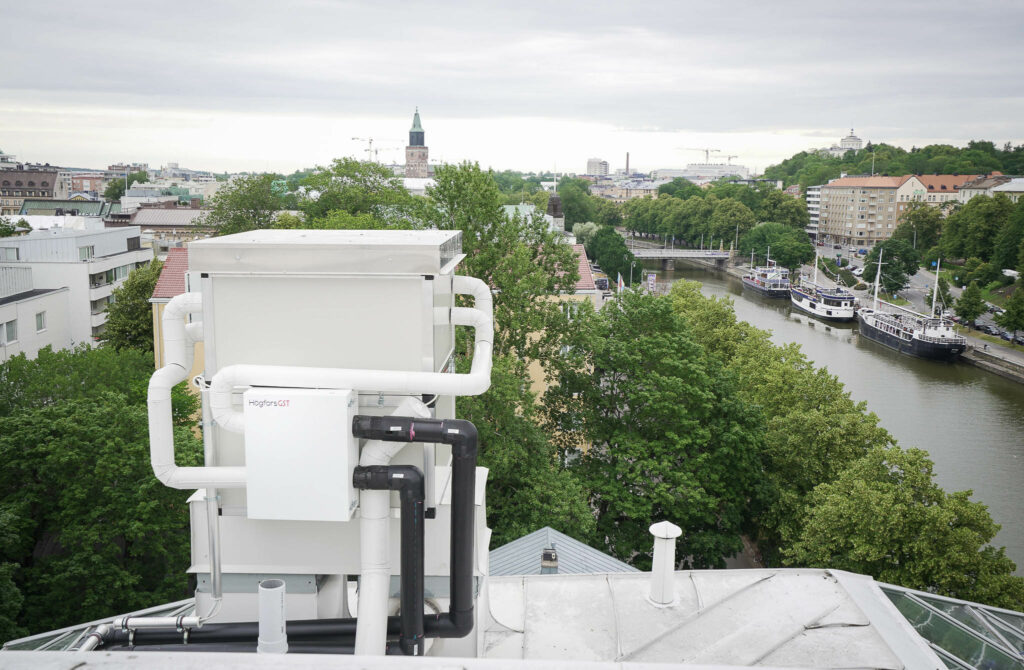
Exhaust air heat recovery is an effective way to save money and cut down on emissions. HybridHEAT system’s heat recovery unit pictured in Turku, Finland
The debate on geothermal and district heating has, in Hartman’s view, taken off in the wrong direction: the juxtaposition of geothermal and district heating is strong when it would be more fruitful to consider the most suitable heating system for each property.
– The choice of heating system is not a zero-sum game between geothermal and district heating. Instead, properties should rather consider what would be the most suitable and cost-effective solution for their needs. Sometimes it is district heating, sometimes geothermal, sometimes a hybrid of the two, or another solution such as a hybrid of district heating and heat recovery.
– There are so many good solutions that have been introduced to the market in recent years that I strongly recommend exploring different options with an open mind, Hartman says.
A hybrid heating system automatically uses the cheapest heat source
Juha Virkki, Business Director at HögforsGST, compares hybrid heating to a hybrid car that chooses to be powered by either electricity or fuel, depending on which is the most appropriate energy source for the situation. Hybrid heating works similarly: the system automatically uses the cheapest source of energy to heat the property.
– Heating is the biggest expense for properties in Finland, and hybrid heating is designed to reduce both total energy consumption and the amount of energy purchased. This reduces heating bills considerably.
For example, a hybrid system combining district heating and geothermal heat can choose the most cost-effective heat source for the property at any given time. As a practical example, if the electricity used by a geothermal heat pump is more expensive than district heating, the system will use district heating for heating.
In times of cheap electricity, the system uses the geothermal heat pumps more. The same logic also applies to hybrids using other heat sources, such as district heating and exhaust air heat recovery.
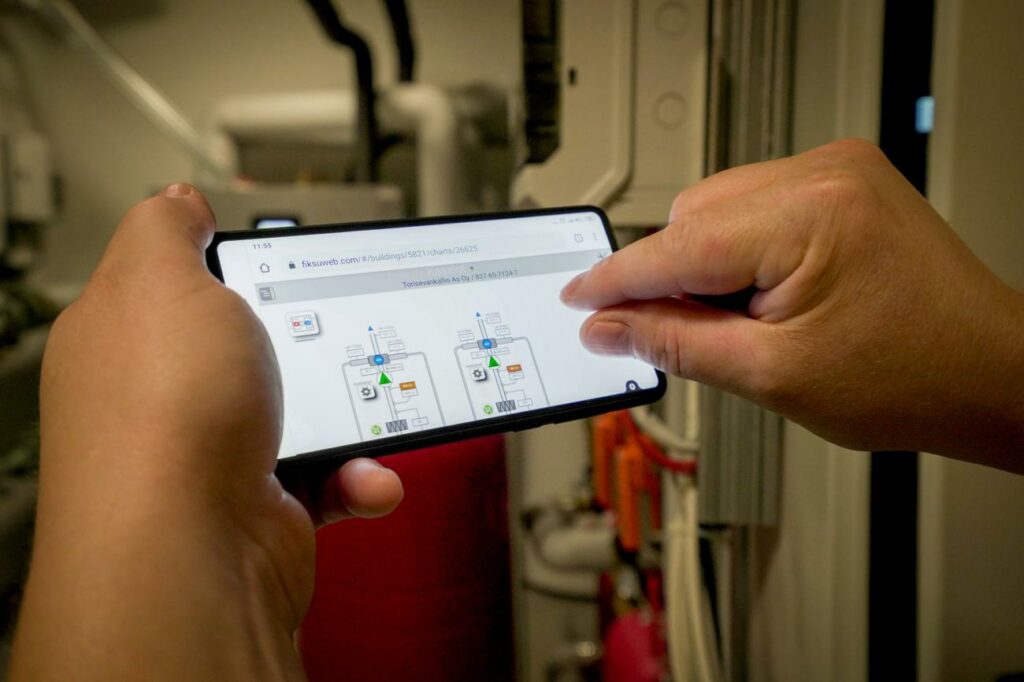
HybridHEAT system is equipped with a smart Fiksu Control System
Automatic heat source selection is a necessary feature nowadays. As we have seen over the past years, the situation around the world can change at a shocking pace. The Covid-19 pandemic and war in Europe have changed many things, energy market among others.
The price of energy, especially gas and electricity, has risen sharply, but by no means steadily. Forecasts made a year or two ago have long since been scrapped, and similar fast-paced changes are possible in the future.
While the price development of district heating has been more moderate, and in many places more predictable, the price of electricity has risen significantly. The price of electricity has recently been characterized by sharp fluctuations between high-spiking prices followed by periods of very low prices.
With a smart hybrid heating system that can alternate between heat sources, a property can make the most of cheap electricity but avoid the troubles of quick price increases by using district heating at these times.
Smaller investment – smaller financial risk
In addition to reducing heating costs by up to 50 %, the investment cost of a hybrid heating system is significantly lower than the cost of a full geothermal system. Antti Hartman points out that rising interest rates are hurting the profitability of geothermal systems, which require a large initial investment.
– The investment required for a geothermal system in an apartment building is about three times higher than for a hybrid system, where the heat pump output is about one-third of the peak power required by the building. However, a hybrid system like this covers almost 70 % of the annual energy demand of the building.
– In addition, rising interest rates are negatively affecting the returns of geothermal systems that often require sizable loans. In a hybrid system, the size of the geothermal system is smaller because it operates side-by-side with district heating. This can reduce the investment costs by hundreds of thousands of euros, Hartman calculates.
Water flow fees often come up in discussions when considering a switch from district heating to geothermal heat. Juha Virkki points out that even those switching to geothermal systems cannot avoid increases in basic fees.
– The electricity connection of a property has to be upgraded to match the increased consumption when switching to a geothermal system. This, in turn, increases the basic fee of electricity. In a hybrid system, the fees may even be reduced, as the water flow required by the district heating system decreases, says Virkki.
Climate-friendly, reliable and affordable – Hybrid heating is the choice for a modern property
Those considering upgrading their heating system should bear in mind that there is one fundamental difference between a property using district heating and a property with a geothermal system: the district heating property is a customer of the energy company, while the property using the geothermal system is responsible for the maintenance and upkeep of the system.
Security of supply is included in the price of district heating, but with a geothermal system, the property owner is responsible for repairing any malfunctions in the system. The unstable global situation also affects the availability of spare parts for heat pumps.
– Supply chain disruptions caused by Covid-19 and the war in Ukraine have made it difficult to obtain spare parts for heat pumps. In the worst-case scenario, this could mean a complete shutdown of heating in properties that rely solely on geothermal heating. Hybrid heating is a more secure solution, as the property can rely on district heating in the event of a malfunction in the geothermal system. This means that homes will stay warm even in unexpected situations, says Juha Virkki.
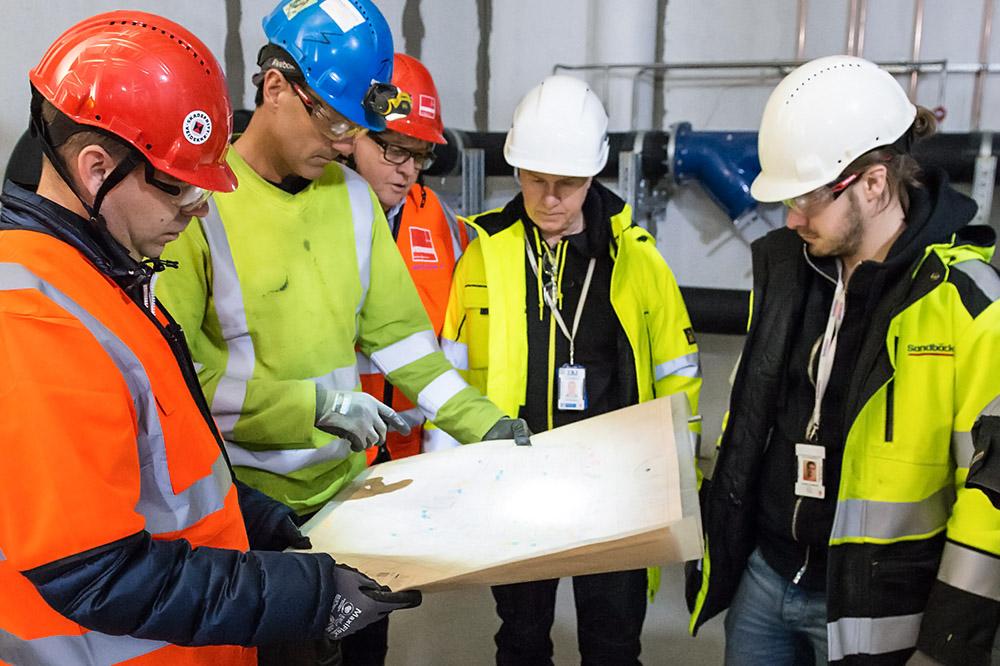
HögforsGST offers thorough technical support throughout the life cycle of a HybridHEAT system
The environmental impact of the heating system is a major factor for many properties considering the switch to geothermal heat. Hartman points out that a hybrid system allows you to enjoy the best of both worlds from the environmentally friendly geothermal heat and the increasingly green district heating.
– Emissions of Finnish district heating have fallen by almost 40% over the last decade and the pace is accelerating: coal will be banned in Finland by 2029 and renewable energy sources such as waste heat are being used more efficiently. The district heating sector is currently undergoing the biggest transformation in its history as it strives to reach carbon neutrality, Hartman points out.
Geothermal and district heating should not be seen as mutually exclusive, but rather as complementary forms of heating. Adding an efficient heat recovery system into the mix only increases the amount of energy savings. An energy-efficient, modern and climate-friendly heating system is also good for the value of the property.
Smart HybridHEAT system combines different forms of heating efficiently
HybridHEAT is a system designed and manufactured by HögforsGST that meets future requirements by combining several different heat sources in one climate-friendly package. HybridHEAT is designed primarily for terraced houses, apartment blocks and other larger buildings, such as offices and commercial properties.
We have implemented dozens of HybridHEAT systems across the Nordic countries. The energy sources for these systems include e.g., district heating, geothermal heating, exhaust air heat recovery, various heat pump solutions and solar power.
An excellent example of a geothermal hybrid is the HybridHEAT system combining district heating and geothermal heat in the Volvo Truck Center, Jyväskylä, Finland. Kurjenlinna in Turku, Finland is a residential complex where HybridHEAT combines geothermal heat, electric boilers and exhaust air heat recovery.
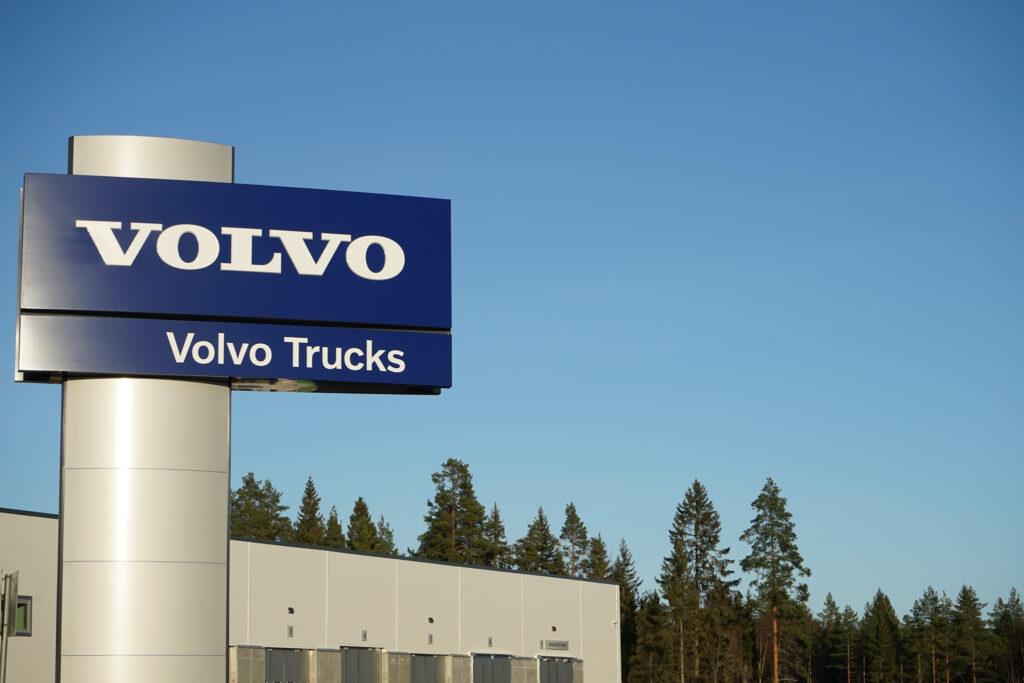
Volvo Truck Center in Jyväskylä is being heated and cooled by a HybridHEAT system using district heating and geothermal energy
